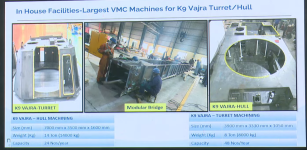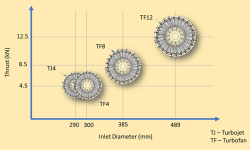India may meet Modi’s defence production target sooner than expected
India's defence production crossed the ₹1 lakh crore mark for the first time ever during the financial year 2023 and the industry might just meet the Narendra Modi government's target of ₹1.75 lakh crore set for the financial year 2025 well before time.
Defence secretary Giridhar Aramane, in an
exclusive conversation with CNBC-TV18 on January 3, said: "We are aiming very high. We have passed ₹1 lakh crore, but not satisfied. We were still the largest weapons importer in the world until last year. We should be able to obviate imports by increasing capacity."
On FY24 targets, the defence secretary said: "I am fervently hoping that our production this financial year will cross ₹1.5 lakh crore and may even inch up higher if exports offer a better opportunity. Largely ₹1.75 lakh crore will be a very ambitious target, but I don't think the Indian industry will fail me on this ambition." He underlined that 45% of new orders are likely to go to the private sector.
Months before achieving ₹1,06,800 crore in defence production, India had set a target to achieve production worth ₹1.75 lakh crore in aerospace and defence goods and services by FY25. This target includes achieving defence exports worth ₹35,000 crore.
Sharing a break-up, Aramane said India is likely to achieve a set target of ₹20,000 crore in defence exports this financial year, "if everything goes well". The defence exports in FY23 were at ₹16,000 crore.
Here is a look at defence production targets and achievements:
FYDefence productionOf which exports
2024-25*₹1,75,000 crore₹35,000 crore
2023-24*₹1,50,000 crore₹20,000 crore
2022-23₹1,06,800 crore₹16,000 crore
2021-22₹95,000 crore₹12,815 crore
* Targets
Source: Rajya Sabha replies, news reports
Aramane said the ₹20,000 crore export target seems reasonable and underlined that India "doesn't supply to conflict zones".
Defence Minister Rajnath Singh has been exhorting defence public sector undertakings to develop/adopt to latest technologies to make India a global defence manufacturing hub and achieve Prime Minister Narendra Modi's vision of Aatmanirbhar Bharat. Singh has also stressed the need to increase India’s defence market share across the globe.
During the conversation with CNBC-TV18, defence secretary Aramane said private companies, too, were picking up in a major way.
"They (private companies) are supplying to major multinational companies such as Boeing and Lockheed Martin, among others. I hope that they will be able to contribute at least 40% of this year's exports," he said.
Sharing an example of how low-cost drones can neutralise submarines, fighter jets and warships as has been witnessed in recent wars, Aramane said India would soon unveil a scheme to encourage the private sector to develop emerging defence technologies.
Defence secretary Giridhar Aramane, in an exclusive conversation with CNBC-TV18 on January 3, said India might cross ₹1.5 lakh crore in defence production and even inch up higher, "if exports offer a better opportunity".

www.cnbctv18.com










 .
.



